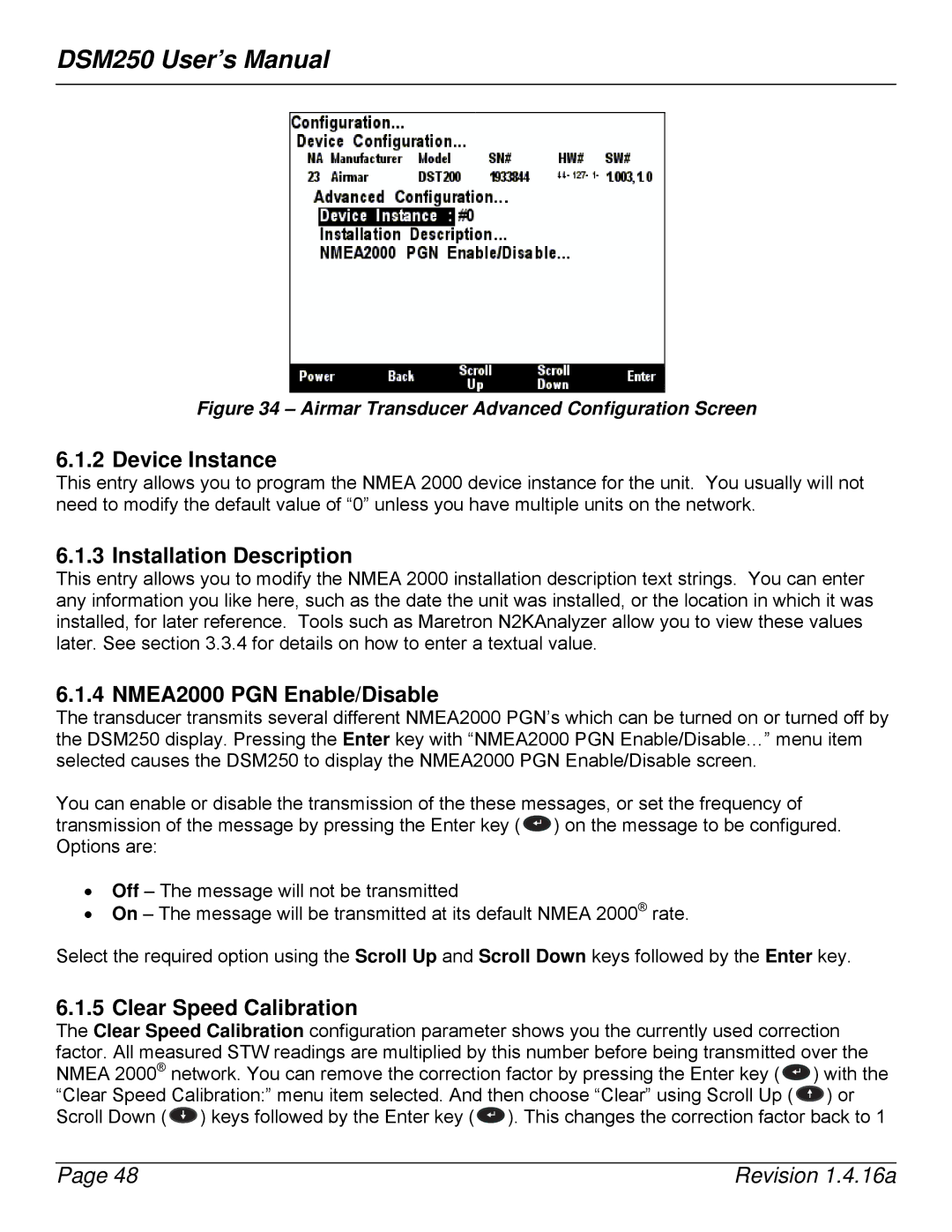
DSM250 User’s Manual
Figure 34 – Airmar Transducer Advanced Configuration Screen
6.1.2 Device Instance
This entry allows you to program the NMEA 2000 device instance for the unit. You usually will not need to modify the default value of “0” unless you have multiple units on the network.
6.1.3 Installation Description
This entry allows you to modify the NMEA 2000 installation description text strings. You can enter any information you like here, such as the date the unit was installed, or the location in which it was installed, for later reference. Tools such as Maretron N2KAnalyzer allow you to view these values later. See section 3.3.4 for details on how to enter a textual value.
6.1.4 NMEA2000 PGN Enable/Disable
The transducer transmits several different NMEA2000 PGN’s which can be turned on or turned off by the DSM250 display. Pressing the Enter key with “NMEA2000 PGN Enable/Disable…” menu item selected causes the DSM250 to display the NMEA2000 PGN Enable/Disable screen.
You can enable or disable the transmission of the these messages, or set the frequency of transmission of the message by pressing the Enter key ( ![]() ) on the message to be configured. Options are:
) on the message to be configured. Options are:
•Off – The message will not be transmitted
•On – The message will be transmitted at its default NMEA 2000® rate.
Select the required option using the Scroll Up and Scroll Down keys followed by the Enter key.
6.1.5 Clear Speed Calibration
The Clear Speed Calibration configuration parameter shows you the currently used correction factor. All measured STW readings are multiplied by this number before being transmitted over the NMEA 2000® network. You can remove the correction factor by pressing the Enter key ( ![]() ) with the “Clear Speed Calibration:” menu item selected. And then choose “Clear” using Scroll Up (
) with the “Clear Speed Calibration:” menu item selected. And then choose “Clear” using Scroll Up ( ![]() ) or Scroll Down (
) or Scroll Down ( ![]() ) keys followed by the Enter key (
) keys followed by the Enter key ( ![]() ). This changes the correction factor back to 1
). This changes the correction factor back to 1
Page 48 | Revision 1.4.16a |
